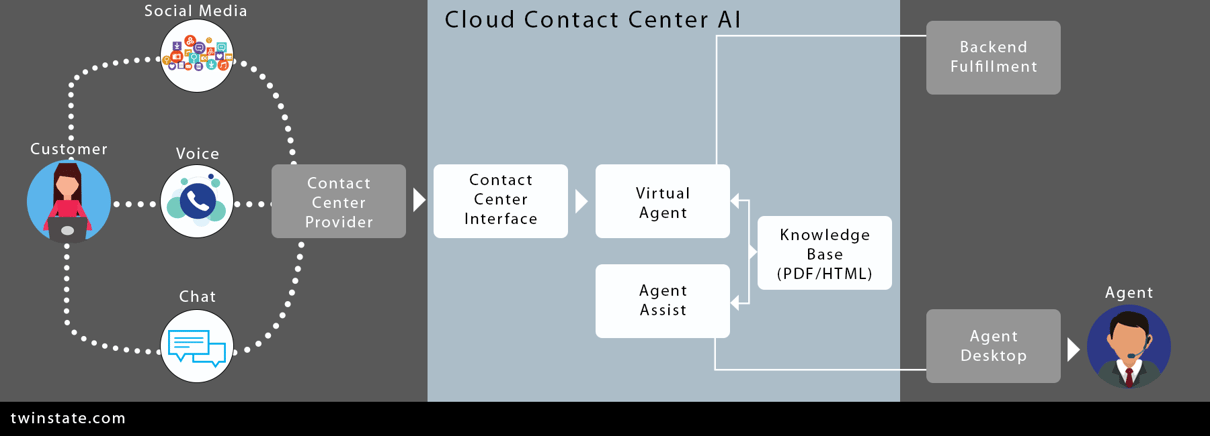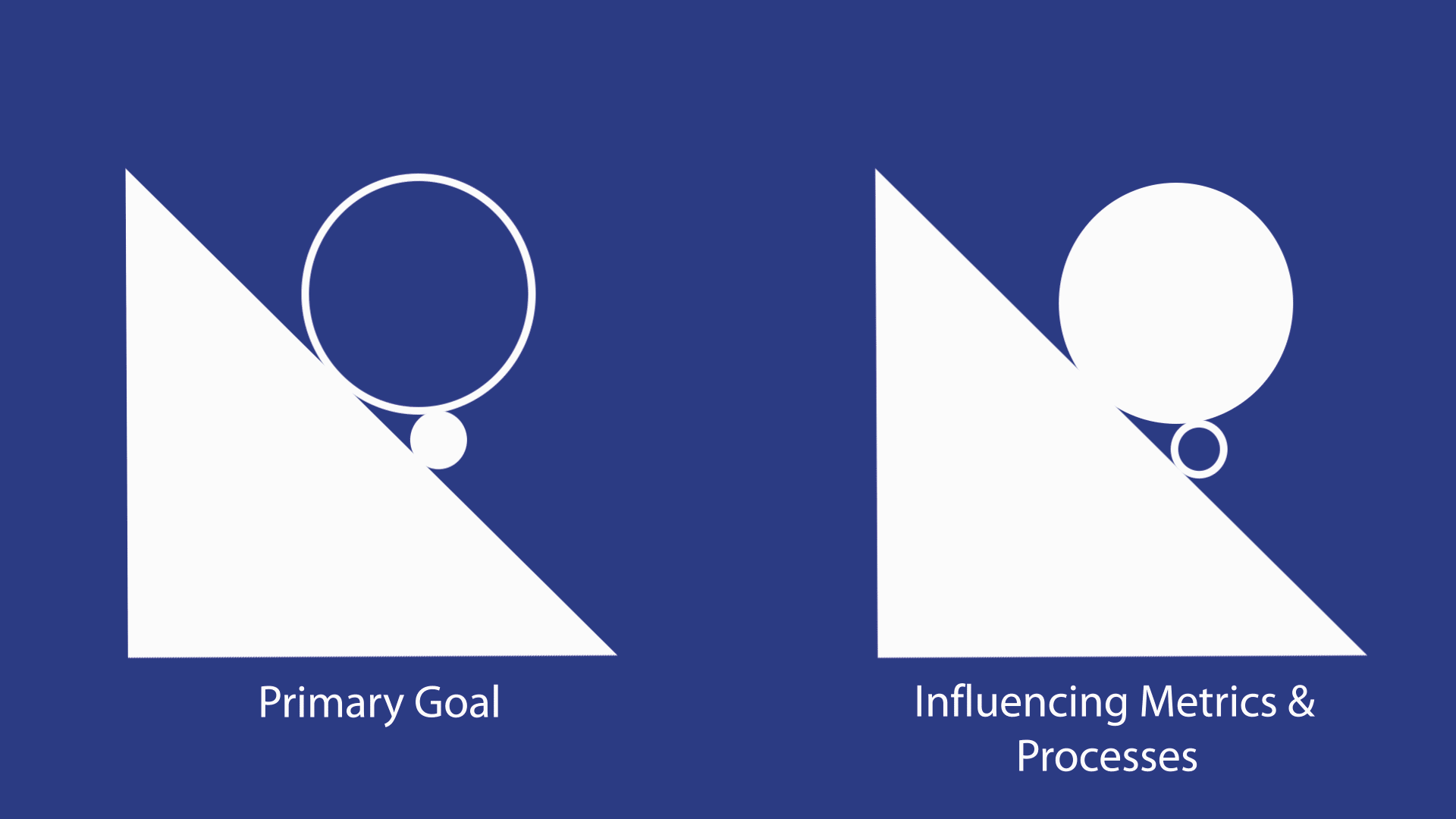Cloud-based technology is bringing big changes to
Why is Contact Center as a Service replacing old technology? The answer comes down to four critical aspects of a contact center that managers are trying to improve. CCaaS helps your business get ahead of your competition and stay ahead by reducing your costs, increasing your reliability, and improving your flexibility and speed. We'll get more into the four ways CCaaS helps you get ahead of your competition, but first let's answer, what is Contact Center as a Service?

“CCaaS stands for contact center as a service.Typically deployed in the cloud, CCaaS provides the core communications components for a contact center with things like skills-based routing, IVR, and outbound capabilities.
”
CCaaS improves every critical contact center requirements. It reduces costs, increases flexibility and speed, easily integrates into your organization, and improves on reliability.
CCaaS is an OpEx model, so it is an operational expense rather than a capital expense. Generally, there are no upgrade fees, so you buy the product once and as it evolves you don't have to pay for add-ons and upgrades.
The hardware requirements are minimal; you're dealing with a computer that's connected to the internet. You only pay for what you use. CCaaS is flexible and allows you to scale your number of users up or down according to your needs. You are no more paying for excess capacity that goes unused.
As we touched on earlier, CCaaS allows you to scale up and down the number of active users; you're paying only for those that are using the technology. You don't have to pay for the high water mark as you would in older legacy models. You gain new features without incurring any downtime or additional costs.
Minimal hardware requirements mean that you can deploy CCaaS anywhere that has an internet connection. You can have CCaaS implemented in days or weeks as opposed to months or years to implement legacy systems.
API friendly solutions allow you to plug and play with minimal effort and reduced cost. Even more important, it will enable you to retain the components of your technology stack that you love and replace the ones that you don't like.
Administration and reporting
CCaaS comes with so many redundancies and routes for the technology to be backed up and supported that you should come to expect 100% uptime.
Any vendor that doesn't give you a service level agreement of 100% or close to 100% uptime is missing the mark. This level of uptime is do-able, and the technology supports it. Even so, you can still monitor the system 24/7 from anywhere.
Call centers are undergoing radical changes globally. From omnichannel communications to personalized interactions, customer expectations are at an all-time high. High call volumes can result in a bad experience for your customer, who gets annoyed waiting in a long queue and for your agent who has to work with a customer that's already low on patience.
Contact Center as a Service can help you tackle the challenge and deliver stellar customer experiences while reducing call volumes.
Customers today are presented with diverse options for communicating with companies. Before voice was the primary channel for communication, but the dominance of the voice communication channel will
Chat, messaging, and social media are positioned to fill that gap with social media rates predicted to double in 2019 as a channel for customer service. This can be an enormous pain point or a great opportunity for your agents depending on the tools they have to work with.
For instance, legacy agent desktop software often is not capable of chat integration.
On the other hand, a cloud call center allows your agents to seamlessly switch conversations from social media to chat to the phone – enabling your customers to start the conversation on their preferred channel and empowering your agent to escalate them to other channels if needed.

Artificial Intelligence has made significant technological advancements and now possess the capabilities to warrant a strategic contact center investment.
AI chatbots assist your customers through basic transactions, like updating contact information or changing subscription plans. This will free up your agents to handle more complex customer requests.
When integrated with the Internet of Things, these technologies have the potential to help your call center become more proactive. Your contact centers can receive alerts from sensors that monitor the state of machines to detect when maintenance or repairs are needed.
Call center supervisors receive accurate insights of agent-customer communications based on real-time reporting. Your staff can be optimized for any scenario you might encounter by analyzing data such as average call times and resolutions rates.
This data is also useful to train new agents or retrain agents who spend too much time on calls or have been struggling to improve resolutions.
Empower your agents with complete access to customer profiles and history. CRM integrations allow your agents to quickly understand the customer who is calling and communicate more effectively with them by viewing their purchase history and other information.
Personalizing these interactions makes for better customer experience and allows agents to resolve issues faster
Channel diversity is a key feature of today's call center. By offering alternative channels for your customers to connect with you, such as chat and social media, you can reduce your call volumes and improve customer experience by communicating with them on their preferred channel.
One of the foundational components that call center management needs to consider is to determine what the big metrics are and what their influencers are. As your priorities move from one big metric to another, you will be able to influence those metrics with more significant impact through targeted efforts that drive the influencing metrics.
Call centers adopting new technology such as AI assistance, chatbots, and the cloud require new metrics and a fresh approach to measuring the success, efficiency, and productivity enhancements provided by technology.
Collecting and analyzing reliable metrics is the only way to measure call center productivity. Metrics help call center management to answer critical questions about their contact center's operational effectiveness.
Questions like...
While the business outcomes you're measuring are likely to be the same as in the past, things like resolution times and customer satisfaction, the way you measure these outcomes is going to be different at a call center driven by advanced technology.
For example, in a call center using a simple Intelligent Virtual Agent, a request will come in, followed by a response based on one or more keywords. AI is used here to classify the intent of the request or handle a frequently asked question.
i.e., "What is the difference between economy class and basic economy class?"
What metric would you use to measure a simple chatbot or voice-bot like the one mentioned? Average holding time makes sense; it's a metric you're already familiar with. What's different now is how you analyze and improve that metric in a tech-centric call center.
If you see an increased session length when using a chatbot, this could be indicative of a confusing interface or inefficient conversational flow. To improve upon this, you will need to sift through chatbot dialogs to uncover where your bot has flaws.
Another metric that can be used to measure chatbots might be new users acquired during a given period. This is useful if you want to measure how successful your efforts have been to encourage customers to engage with your chatbot. If you see a decline in new users, this may be a sign that it's time to change tactics or use fresh messaging to promote new usage.

You can spend all your hours and effort trying to push your main goals from behind, or you can identify and fix the smaller metrics and processes that are preventing your primary goal from rolling downhill on its own.